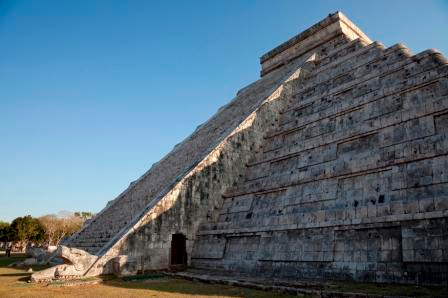Civilizations around the world have always sought out ways to respect and worship their god or gods, and one universal method has been to create grand cathedrals or monuments as gathering places for worship, tribute and homage to their deity.
For thousands of years, communities have constructed at great effort houses of worship.
Let’s look at some of the most amazing creations from around the world.
Notre-Dame de Paris
Notre-Dame de Paris is one of the most famous cathedrals in the world, and deserves all the recognition it gets for its detailed craftsmanship, architectural marvels and beautiful details.
It was started in 1163 and finished two hundred years later, a relatively fast construction for cathedrals at the time.
During the French Revolution, the cathedral was vandalized, dedicated to the cult of reason and eventually used as a warehouse for food before being rededicated as a Catholic cathedral.
It is now one of the top tourist destinations in Paris, and beloved for its stained glass, ornate craftsmanship and legendary history.
Chichén Itzá
Chichén Itzá is a large archeological site of the ancient Mayan civilization, and includes several massive temples constructed for the worship of Mayan gods.
The Mayan culture thrived for several hundred years until they were wiped out by the Spaniards and the diseases that came with them in the early 1500s.
The Temple of Kukulkan, or El Castillo, is the most recognizable temple. With its 91 steps on each side, plus one more at the top to make 365, the Mayan understanding of astronomy and science is clear, and the temple played an important part of their worship as well as scientific study.
On the spring and fall equinox, the sun casts a shadow on the pyramid in the shape of a serpent.

Excavations and research are ongoing at the site, and visitors can tour the many temples and pyramids, as well as ball courts and other sites.
Angkor Wat
Angkor Wat is a vast temple complex in Cambodia, originally dedicated as a temple to the Hindu god Vishnu before being transformed into a Buddhist temple.
Construction started in the 1100s, and it was modified for Buddhism around the 1300s. Though it fell into disrepair in the 1600s, it has been somewhat preserved, and is still frequented by Buddhist pilgrims.
The rectangular outer wall of the temple grounds stretches over half a mile by just under a half mile, giving it an enormous footprint. The interior temple is no less grand, with massive pillars, carvings and bas relief throughout the temple, both on the interior and exterior walls.
In the last 20 years, tourism has skyrocketed at the temple, and visitors from around the world flock to this marvel of dedicated craftsmanship and talent.
Hagia Sophia
Originally constructed as one of the first Christian cathedrals, the Hagia Sophia was the jewel of the eastern Roman Empire’s capitol Byzantium.
When it was sacked by the Islamic Ottomans in 1453, it was turned into the city’s first mosque. The design was modified by adding minarets, a mihrab pointing towards Mecca, tombs for sultans as well as other ornate mosaics and artistic crafts common among Islamic and Ottoman structures.
The Hagia Sofia was turned into a museum by the first president of the Turkish Republic in 1935, and has been a renown museum since.
Horyu-Ji
The Horyu-Ji temple in central Japan is known as the oldest wooden structure in Japan and among the oldest wooden structures in the world. The temple pagoda was built around the 700s AD and many other structures on the site were built around the 800s AD.
While there have been restorations and repairs as needed, these beautiful and ornate structures are still comprised mostly of the original materials.
The pagoda stands over 120 feet high, and the base is buried in the ground for added structural security. One remarkable feature of the temple is that it has withstood over 40 significant earthquakes in its lifetime.
Looking back over these impressive structures, the dedication and talent committed to the construction and maintenance of these holy sites is impressive and awe inspiring. The hands that built and maintained these temples will never be known, but they should be recognized for their talent and devotion.




